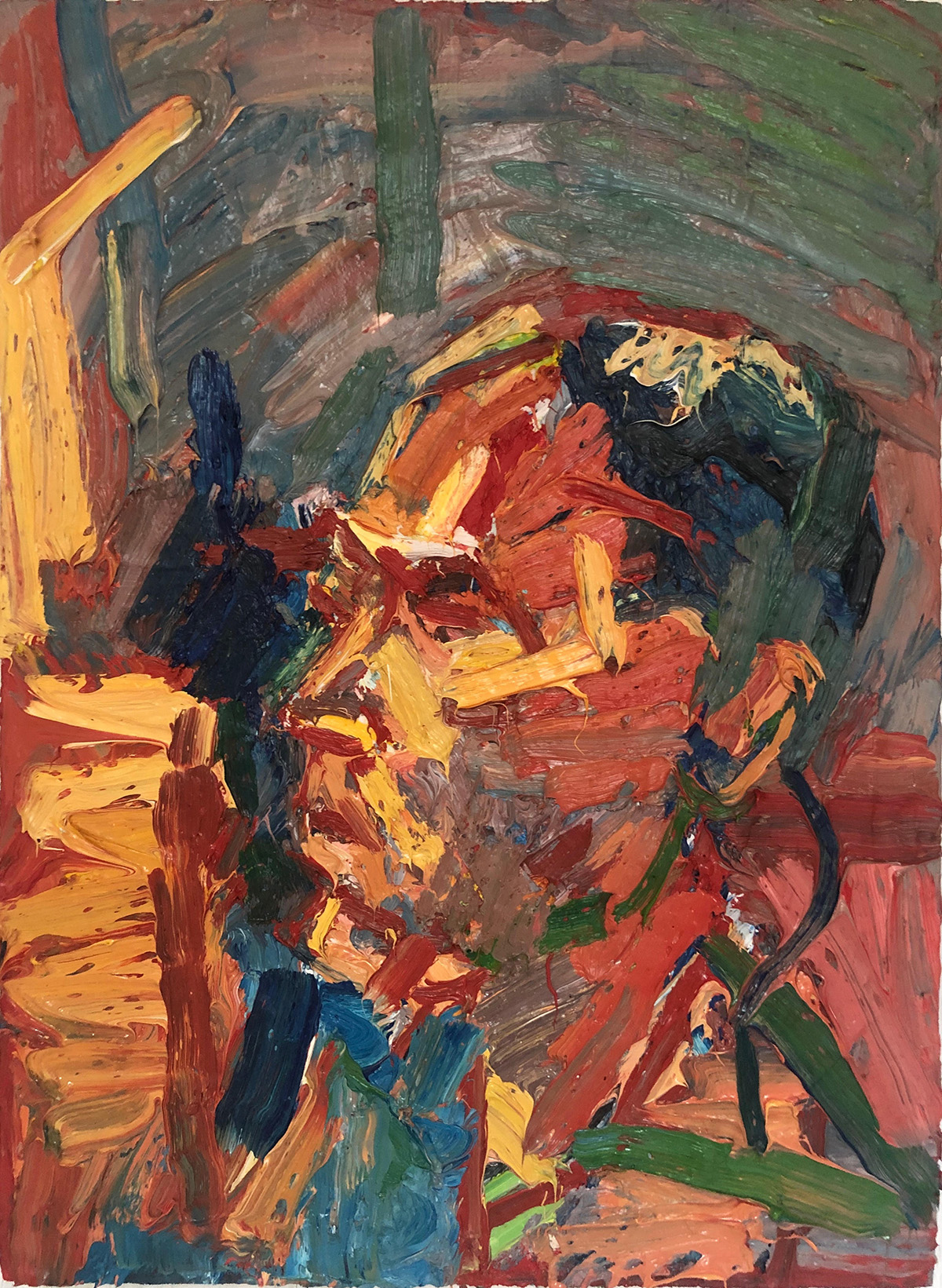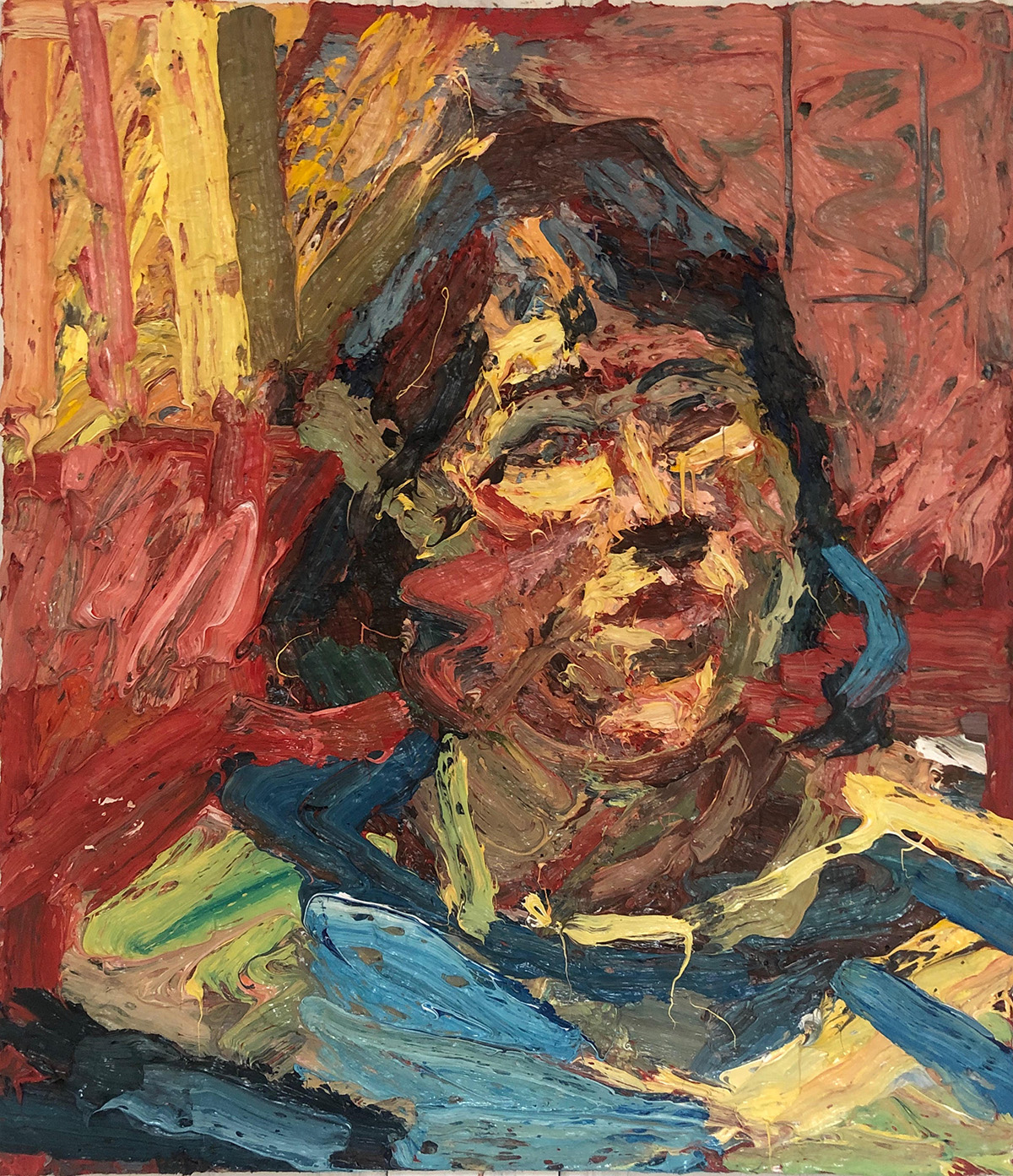In the year of his 71st birthday, Peter Clossick LG elucidates his obsessions around work, process and practice.

It is a combined experience trying to create work, to paint, to gain knowledge and understanding from the activity and also operate within the complexities of the art world and the world in general. I find it can be frustrating, cathartic, make me happy or sad and can definitely leave a dose of anger, joy, pleasure and a strong feeling that I am not wasting my limited time of existence. There is no point in regret at past choices, or having hope for the future, but just making the most of the existing moment, the here and now. I count myself lucky, privileged; it was all I could do as a child on an inner London council estate, living in my imagination, loving playing and enjoying drawing. I remember my first report from the grammar school I was expelled from, saying, “he tries hard in his own peculiar way” which even then I thought very appropriate, because nothing has changed. I don’t have any solutions, just questions and a belief in perseverance. Prior to art school, in my case Camberwell, I spent 3 years at Leicester Polytechnic studying shoe design. Then, through a design studio, working for high fashion retail outlets and travelled to and from Italy and Spain.
There is a quote by John Constable which I like, it says, “It is the business of a painter not to contend with nature, but to make something out of nothing – in attempting which, he must almost of necessity, become poetical”. And put in another way by W B Yeats who said, “out of the quarrel with others we make rhetoric, from the quarrel with ourselves, we make poetry”. Probably from my experience of working on building sites as a student I always felt that was what I was doing, trying to hammer out a poem.
First off, if you will allow, I’ll get my gripes about the art world out of the way so as to put them behind me, I have a few which are personal and I’m sure not all would agree with me. Constable would be regarded as figurative – but why are artists labelled figurative, abstract, conceptual, video etc when these titles have no meaning? All art work has a concept/idea for example, whether it comes before or after. All painting is a performance of one kind or other and a painting on a wall is a form of installation. But painting I feel today is rather looked down upon as a source of communication, it is not on many people’s radar. A friend said to me there are far too many artists, with too few crumbs on the table – and the majority of them scrabble for notice within the market place. There are as many fine arts as there are artists, whether they are in the spotlight or in the shadows it little matters, as it’s their engagement that counts. If, as an artist, you sell and are marketable the system will glamorise your position, if you are within the system and then critique the system, nobody will see your work.
We live in a time where we continue to applaud the grandiose, with governments ennobling not only the richest bankers, but also those developers and architects who make the tallest and most fanciful buildings. The public has now been conditioned to pay attention to no one else but celebrities and none more so than in the art world. The artist personality has overtaken the artwork and the curator has overtaken the artist. We are swamped by large-scale, institution friendly gallery fodder that avoids identifying anything conceivable as a statement and is now just a comment within today’s random pluralism, “to be everywhere is to be nowhere” Seneca once said. And New Yorker Ben Davis recently wrote, “The halo around art grows ever brighter and more distinct even as the light source itself, the artwork, vanishes from view”. The attention has gone from the object to marketing. “Art News” giving dignity to commercialisation. A so called “risk-taking” public gallery is applauded for spending public money on an artwork consisting of a gallery attendant singing to visitors, because they are buying an “uncollectable” work. I’m sure the German choreographer is sincerely delighted to have his song played in a major public gallery and I have no doubt many would consider the performance a great work of art. George Orwell said, “There are some ideas which are so absurd that only an intellectual can believe them”, and we are surrounded in the arts by intellectuals. I would love to put my painting into a music competition, calling it “silent sound”. Novelty is not the same as originality, which is extremely rare, originality must have origin – it comes from somewhere. Problem for people like me is that we live in a world of instant gratification and I produce slow-object art, some would say Neanderthal art, it has been recently discovered that 64,000 years ago Neanderthals did draw on the walls of the cave, so maybe I’m not alone.
In our modern global world, artworks, both old and contemporary, are just big business. Quoting a rant in the Guardian they said, “…all public funding should be stopped and all public galleries should be closed. If there is one thing contemporary art doesn’t need, is public funding to enable the corruption that goes on in the art world. Indulging in what, in the financial world, would be considered insider dealing, rigging interest rates, skimming and the like”. Stefan Kalmar, director of the ICA, has said, “The big question for us all – but particularly for artists because it’s more pressing – is essentially, can we bite the hand that feeds us?”
One of the questions I ask myself is why use paint, why easel painting, closely connected as it is to the idea of aesthetic autonomy, intrinsically valuable, and also free of social function – a historical condition that the rectangular easel painting is left with. I think my answer to this is that for me it’s an experimental esoteric game of infinite depth – with my own conscious beliefs and attitudes shaping my activity as a painter. I use thick impasto because to a certain degree it puts the control out of control, becoming more physical and haptic which I find more real. A combination of two forms of awareness which are necessary for depiction, held together in the mind as a single composite experience, through the resources of the medium applicable to all forms of two dimensional pictorial signs. I work from observation and Sam Taylor Coleridge in 1818 wrote in his essay, “Poesy or Art”; “It is sufficient that philosophically we understand that in all imitation two elements must co-exist, and not only co-exist, but must be perceived as coexisting. These two constituent elements are likeness and unlikeness, or sameness and difference, and in all genuine creations of art there must be a union of these disparities.” Does Figurative mean resemblance or can it be representation? A painting resembles the person but does the person resemble the painting? Can the copy theory of resemblance be sufficient? In mimesis, which offers a mirror image, does this definition also recognize a work of art as not real? A photograph is not real or even like the subject, it is a photograph. When you look at an image, rather than as a “window onto the world”, you are simultaneously attending to both the marked surface of the painting and what that surface represents, with attention to both surface and subject to create mutual enhancement.
The early Christian theologian Tertullian (160-220AD) said credo quia absurdum est., “I believe because it is absurd”; a remark later repeated by the existential thinker Kierkegaard (1813-55) who also said, “(truth) is an objective uncertainty held fast in an appropriation-process of the most passionate inwardness”. There is never a definitive answer, as noted by Giacometti, where in my studio I have pinned up his quote to constantly remind me to keep going, “The model could sit for a thousand years and I’m certain in a thousand years I’d say everything’s wrong, but I’m getting a little closer. There’s no reason to change the model, my only concern would be to focus more on the same subject and try to push it as far as possible, without worrying about the outcome. Because, whether it’s a failure or a success the truth is exactly the same. There’s only success in relation to failure. The more it fails the more it succeeds”…where there is no hope left, there is no fear, where you are not left thinking is this right or wrong but just doing, conjoining within the experience. At the expense of sounding idealistic, that is my goal, the impossibility of painting someone as you experience them, drawing out the spirit of the subject, it is not just about you it is what you bring to the activity.
©Peter Clossick LG, 2019

Peter is exhibiting at The Cello Factory, Felix & Spear and The Mall Galleries this June, visit www.thelondongroup.com/retroactive for details
